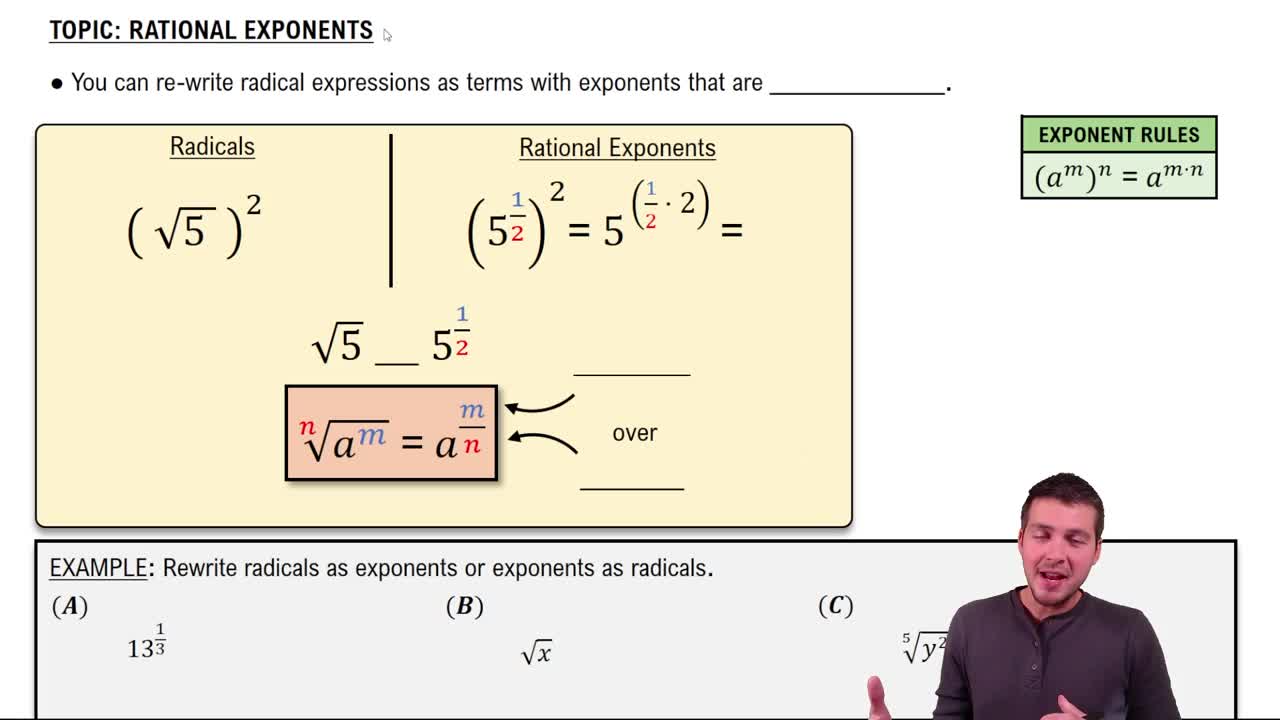Here are the essential concepts you must grasp in order to answer the question correctly.
Radical Expressions
Radical expressions involve roots, such as square roots or cube roots. The index of a radical indicates the degree of the root; for example, in ⁹√x^6, the index is 9, meaning we are looking for the ninth root. Understanding how to manipulate these expressions is crucial for simplification.
Recommended video:
Radical Expressions with Fractions
Properties of Exponents
The properties of exponents govern how to simplify expressions involving powers. Key rules include the product of powers, quotient of powers, and power of a power. For instance, x^a * x^b = x^(a+b) and (x^a)^b = x^(a*b), which are essential for reducing the index of radicals.
Recommended video:
Simplifying Radicals
Simplifying radicals involves expressing a radical in its simplest form, often by factoring out perfect powers. For example, to simplify ⁹√x^6 y^3, one would identify how many times the base can be divided by the index, allowing for the extraction of whole numbers from the radical. This process is key to solving problems involving radicals.
Recommended video:
Adding & Subtracting Unlike Radicals by Simplifying
 Verified step by step guidance
Verified step by step guidance Verified Solution
Verified Solution

